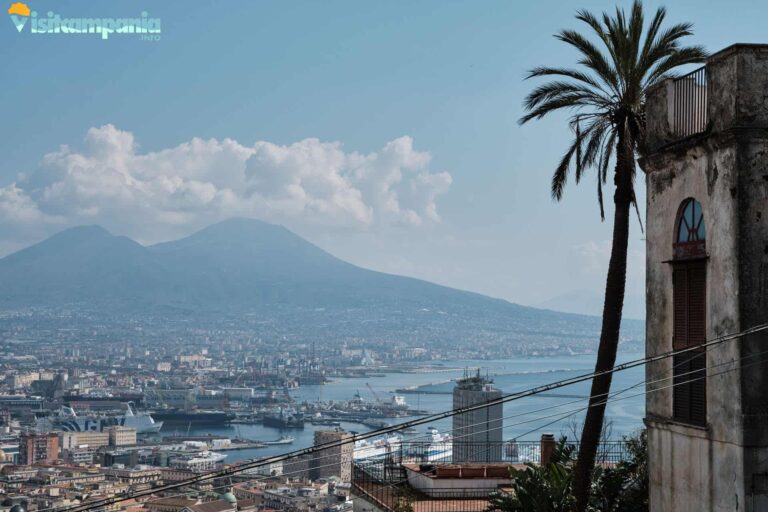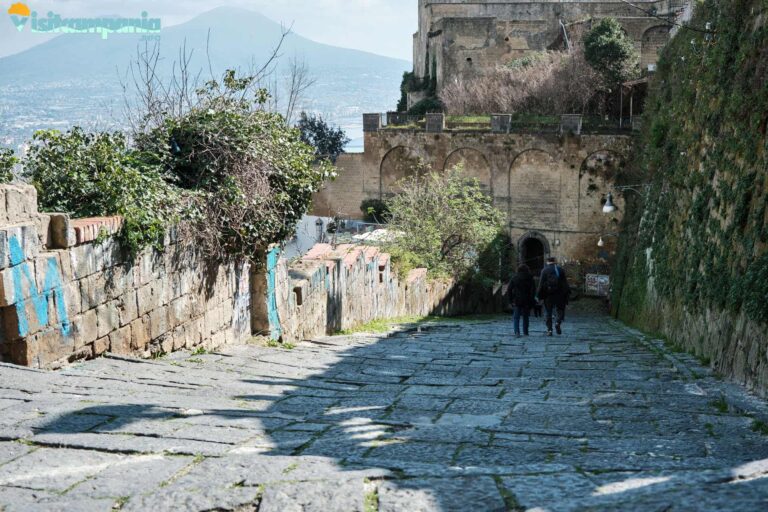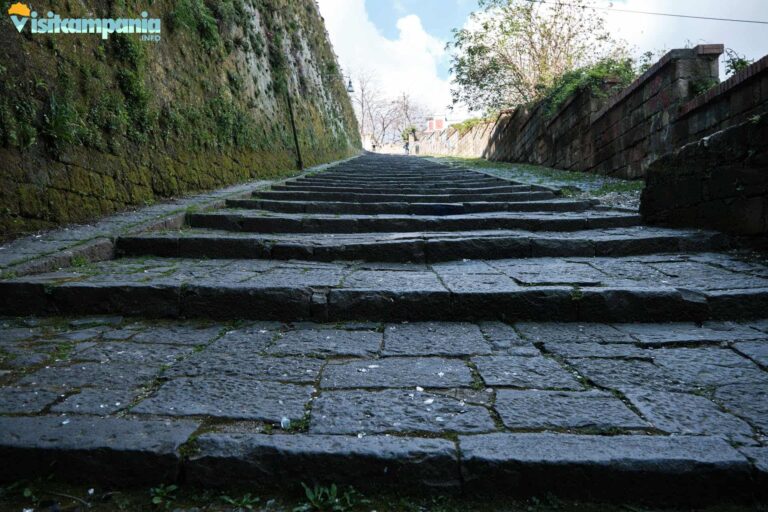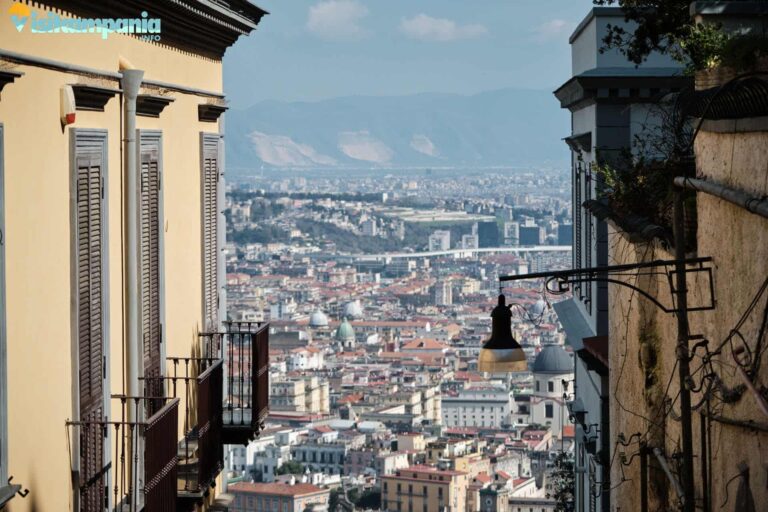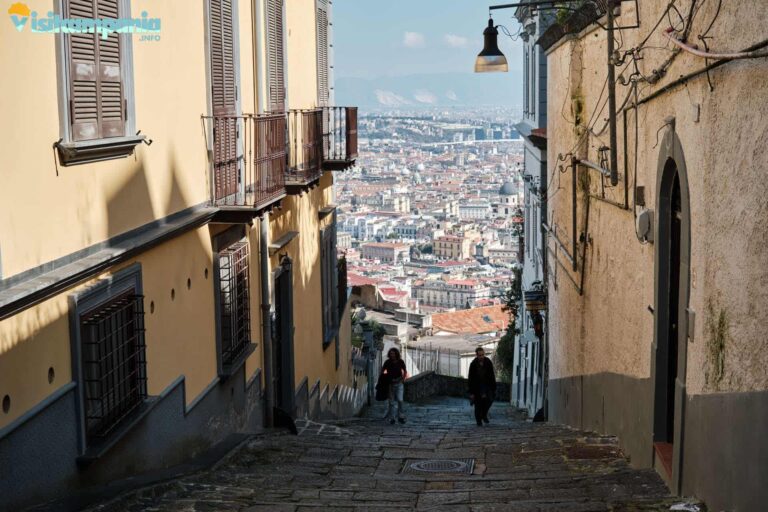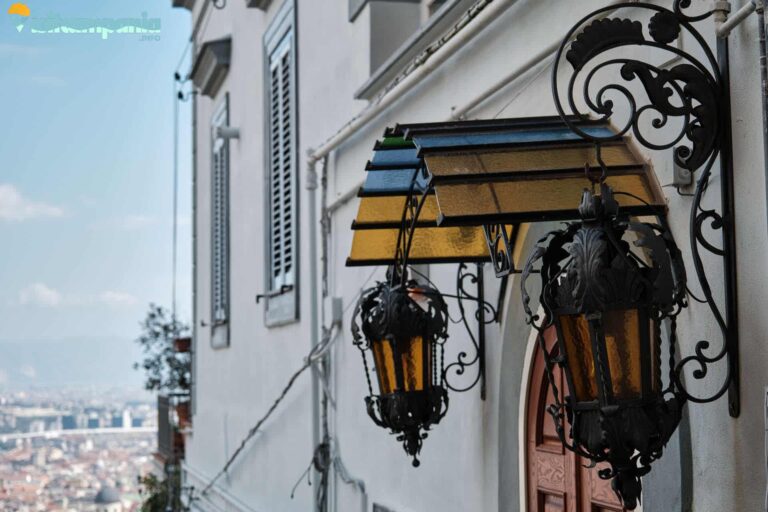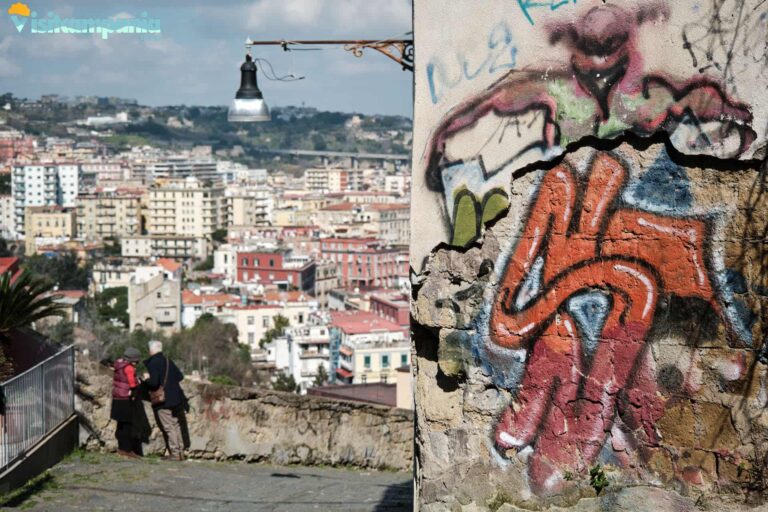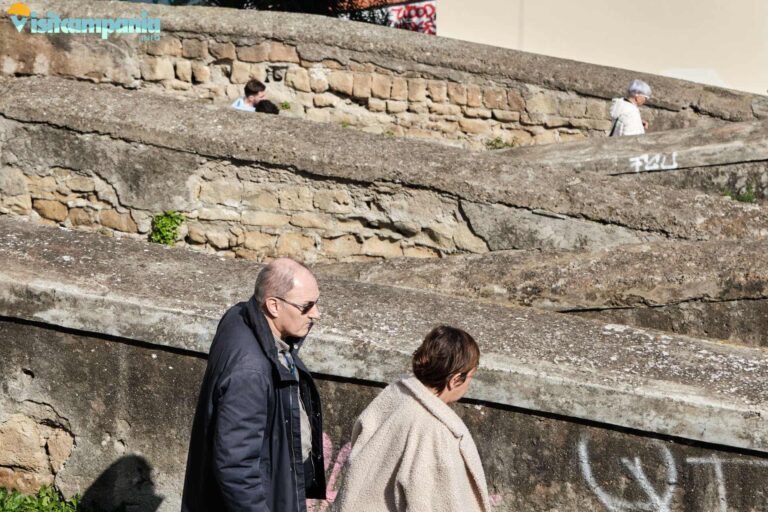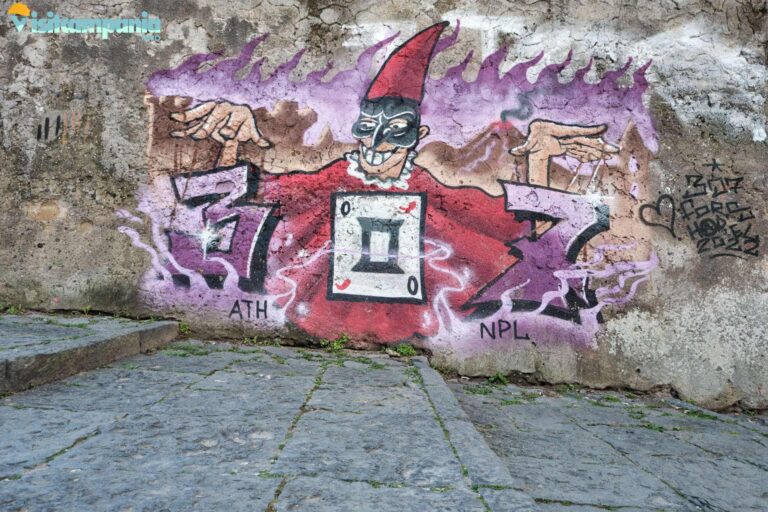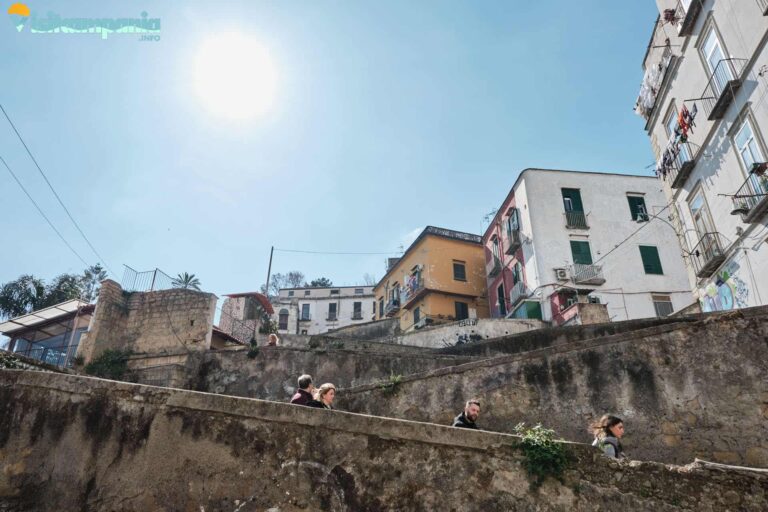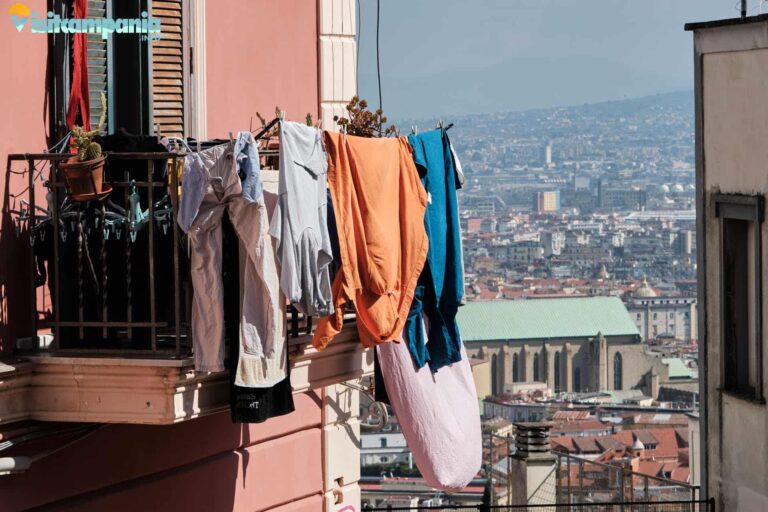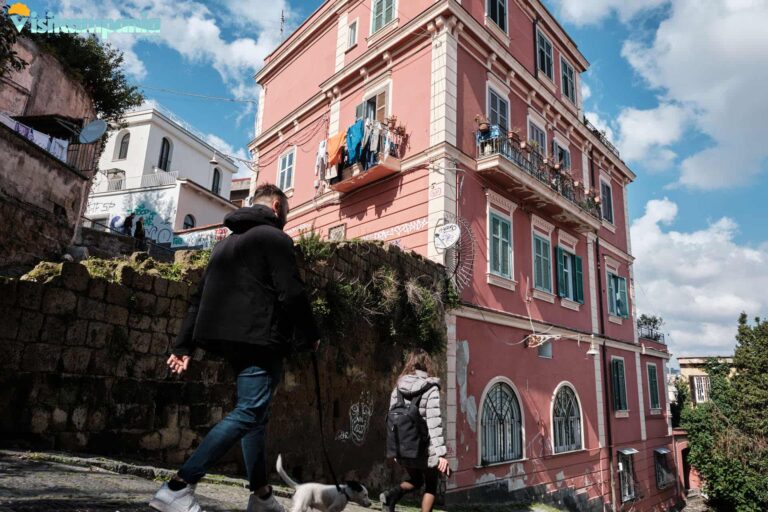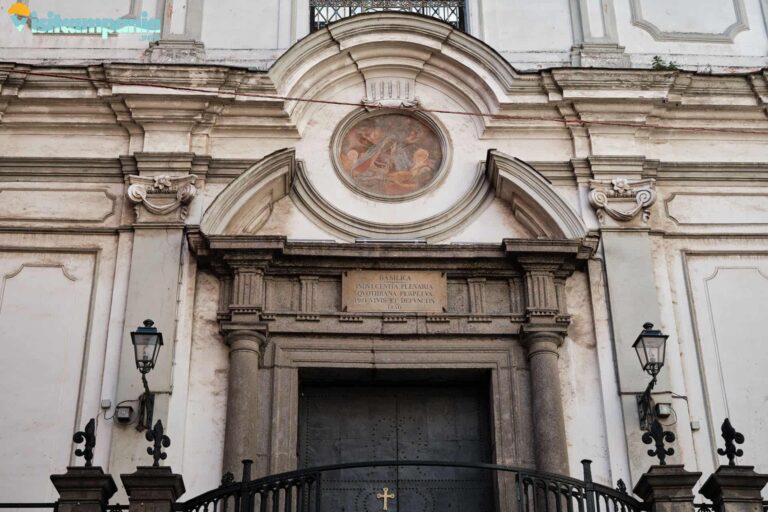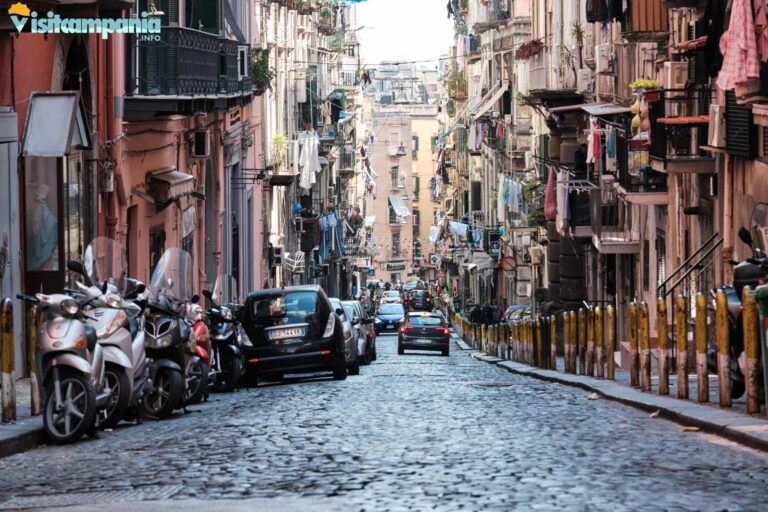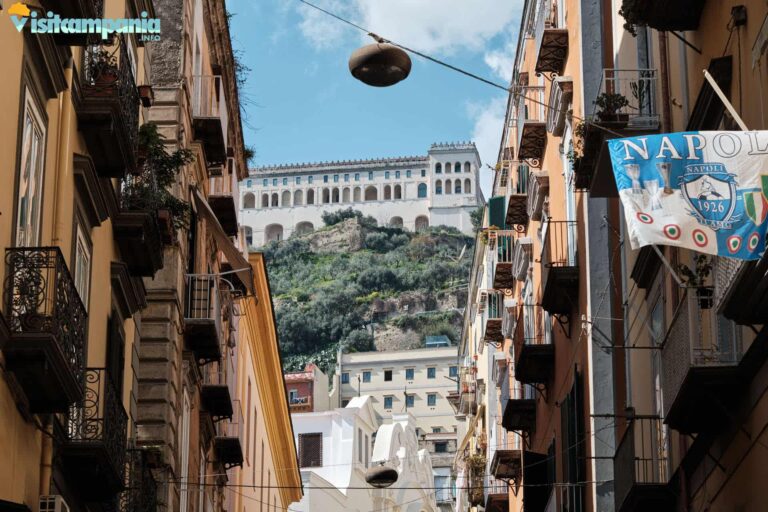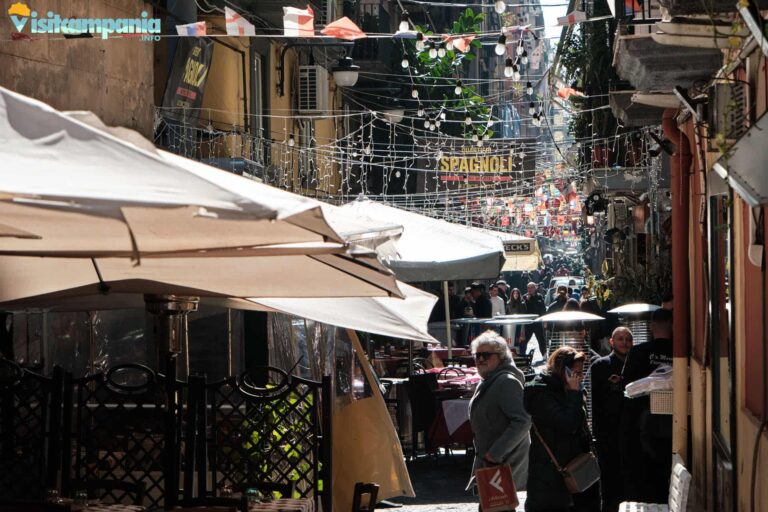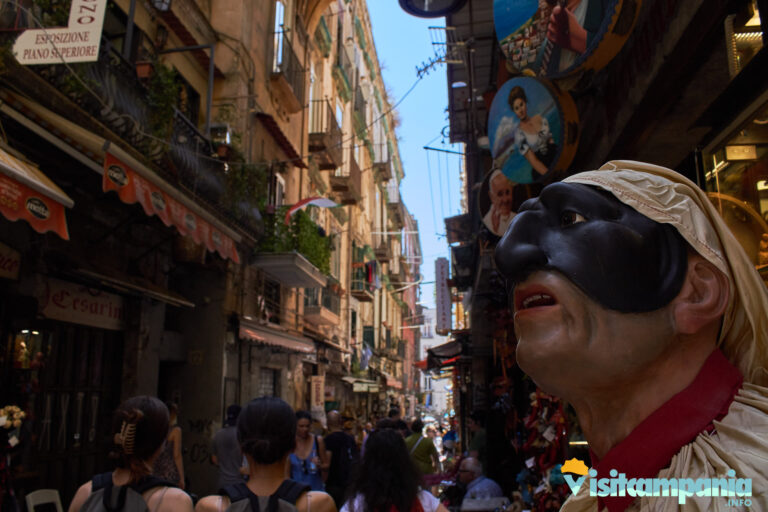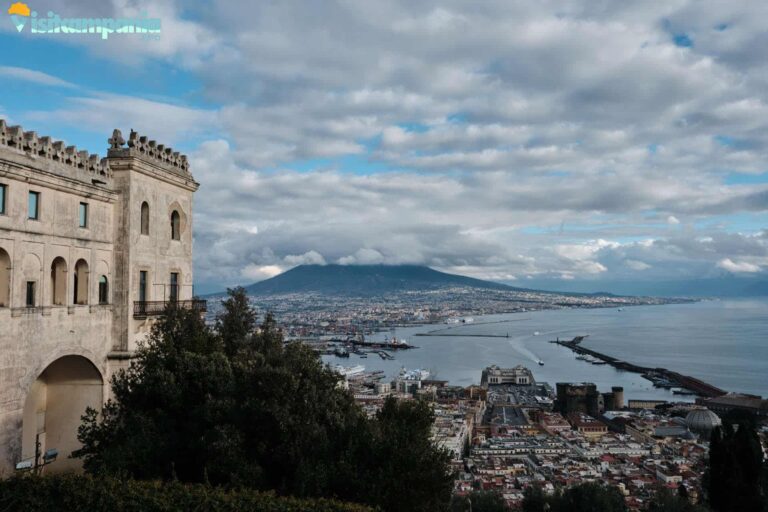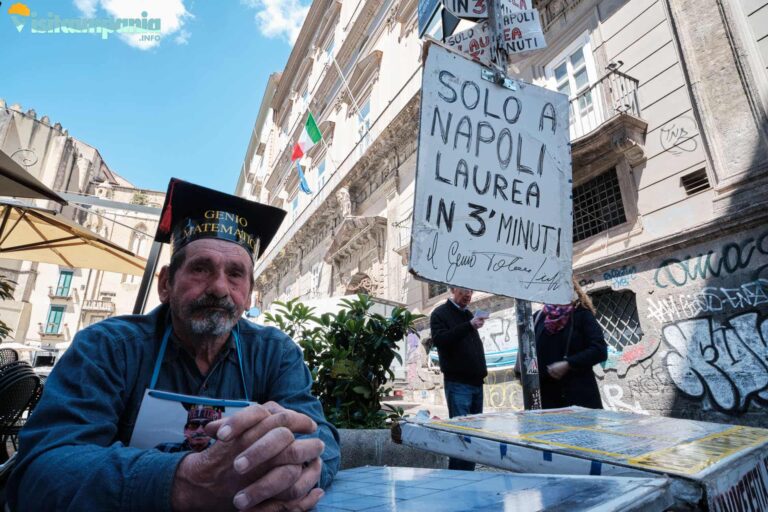Via Pedamentina in San Martino: from the Certosa to Toledo
Via Pedamentina in San Martino is a panoramic staircase of 414 steps, 700 meters long and a vertical drop of about 100 meters. It joins the Certosa di San Martino and Castel Sant’Elmo, on the Vomero hill, to Corso Vittorio Emanuele in the historic center of the lower town. With many other pedestrian routes, such as the Petraio or the Moiariello, it forms that network of hilly paths that accentuate the urban verticality of Naples and allow you to enjoy splendid views away from city traffic.
The historical origin of the Pedamentina dates back to the fourteenth century when the Angevins began work on the construction of the Certosa di San Martino and Castel Sant’Elmo in an area isolated from the rest of the city. The road, at the time only a series of hairpin bends, was therefore built to bring materials and equipment to the two construction sites. Only later were steps added. Over the centuries, the Pedamentina has also been used as a defensive outpost for the castle and has been the scene of various bloody battles, with barricades and hiding places, such as those that took place during the revolt of Masaniello or the Four Days.
Today the Pedamentina runs along the gardens of the Certosa that develop on the Vomero hill and crosses a UNESCO World Heritage Site.
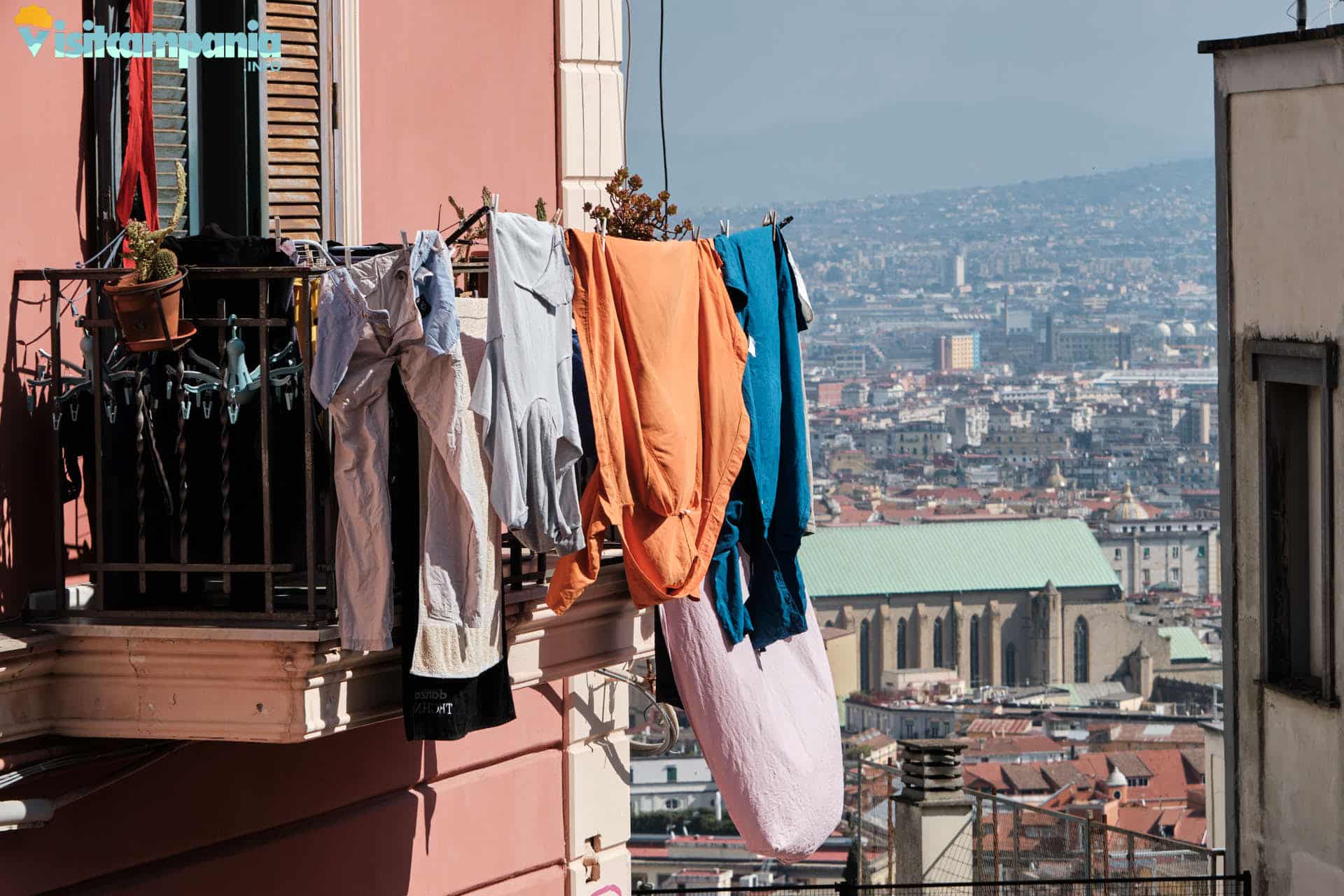
The view is spectacular and intoxicating from the terrace of Largo San Martino, at the beginning of the route, and allows you to broaden your gaze on the Gulf of Naples, on Vesuvius, on the hill of Capodimonte, on the monastery of Santa Chiara, clearly grasping the development of the lower decumanus better known as Spaccanapoli. So much beauty has also attracted famous artists. Along the ramps of the Pedamentina stayed, in fact, the poet Charles Baudelaire and the writer Marguerite Yourcenar set ” Anna, soror”, one of the three stories that make up “Like flowing water”.
On the way!
We start our urban trekking route from largo San Martino, on the Vomero hill, right at the beginning of the steps of via Pedamentina in San Martino. The track is wide and easy and has no demanding slopes. It can be, therefore, safely traveled to climb even if we, here, propose it to you to go down.
The starting point is right near the Certosa di San Martino and is easily accessible from the Morghen funicular stations, Montesanto funicular, and Piazza Fuga, Central funicular. Not far away there is also the Vanvitelli stop on metro line 1 and, right near largo San Martino, there is also a bus stop.
Before starting the descent let’s look out from the terrace of the belvedere from which you can enjoy one of the best panoramic views of the city. Clearly visible are the Vesuvius, the monastery of Santa Chiara and the lower decumanus, Spaccanapoli, which cuts like a blade the historic center of Naples.
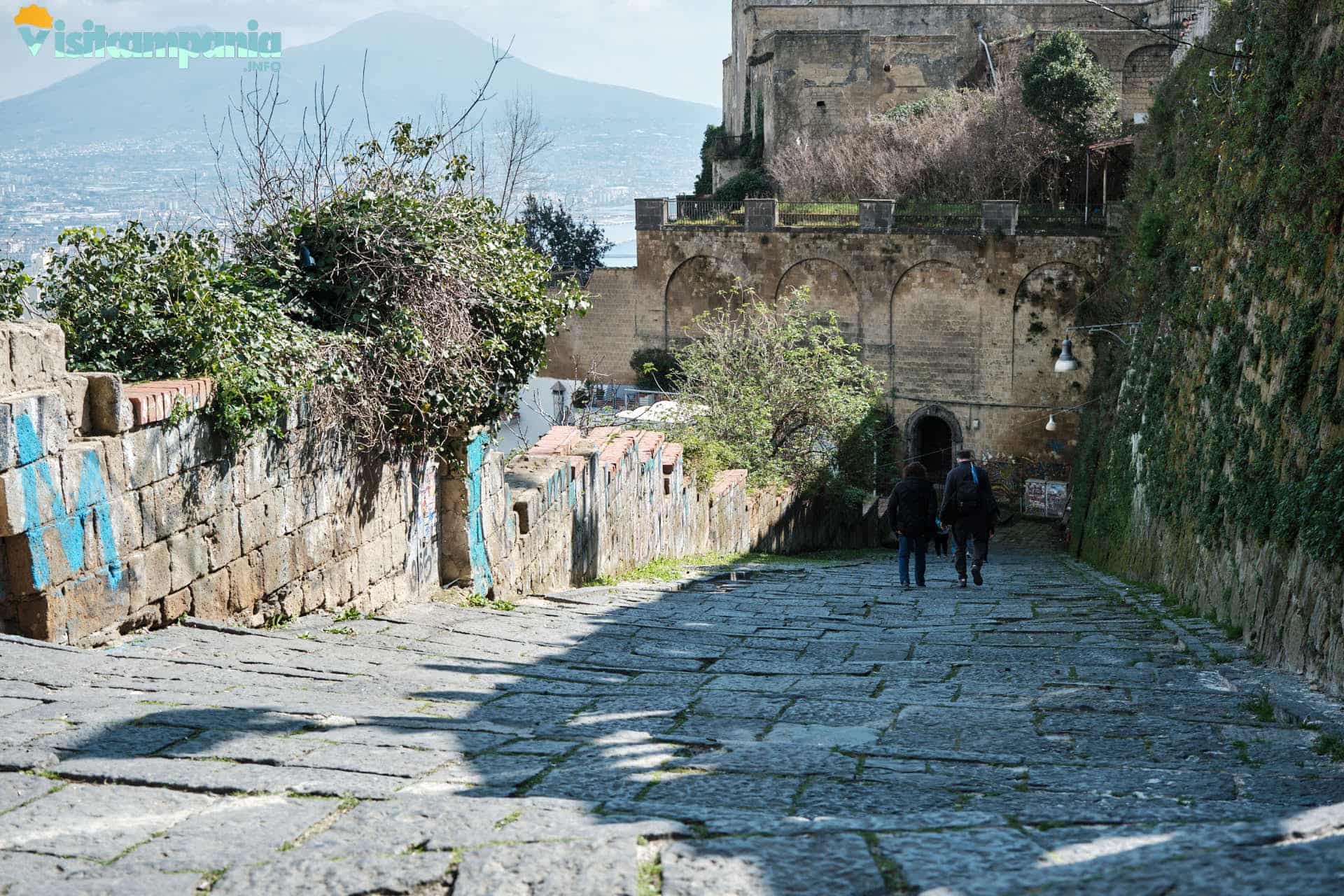
We begin to descend. The first stretch unrolls like a carpet on the hillside. In the second hairpin bend, on the right, there is a battered door. Legend has it that here the guards of Castel Sant’Elmo killed the prisoners and that, even today, you can hear cries and heartbreaking laments. Speaking of ghosts, pay attention also to the one classically dressed in white who loves to scare visitors to the castle and who more than someone swears clothes right on the Pedamentina. Having made the due conjures, we continue the descent. Another curve to the right and a wide straight stretch almost seems to flow into the houses below while the historic center of Naples is the inviting backdrop. So,between one curve and another, a colorful mural, an Art Nouveau canopy and a panoramic terrace, we soon reach Corso Vittorio Emanuele.
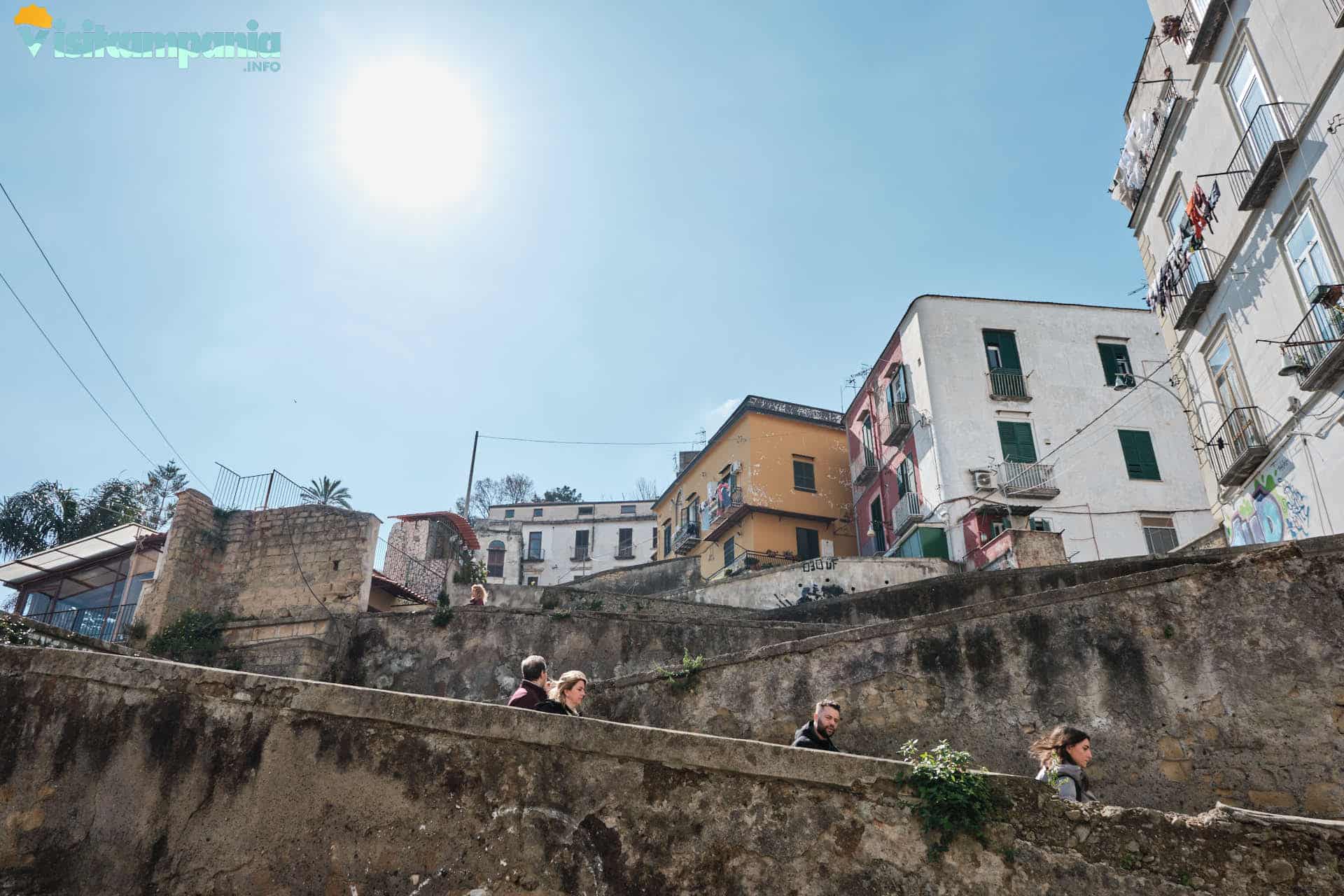
From Pedamentina to Montecalvario and Toledo
Here ends via Pedamentina in the strict sense. But we continue our walk entering the Montecalvario district, part of the Spanish quarters, where the names of streets and churches evoke stories and mysteries.
We cross the road at the traffic lights that we see on our right and go down vico Trinità delle Monache. We continue, then, on via Santa Lucia a Monte where, on the corner with via Pasquale Scura, we meet the fifteenth-century church of Santa Maria ad Ogni Bene dei Sette Dolori. We continue straight on via Francesco Girardi and soon we cross via Concezione in Monte Calvario.
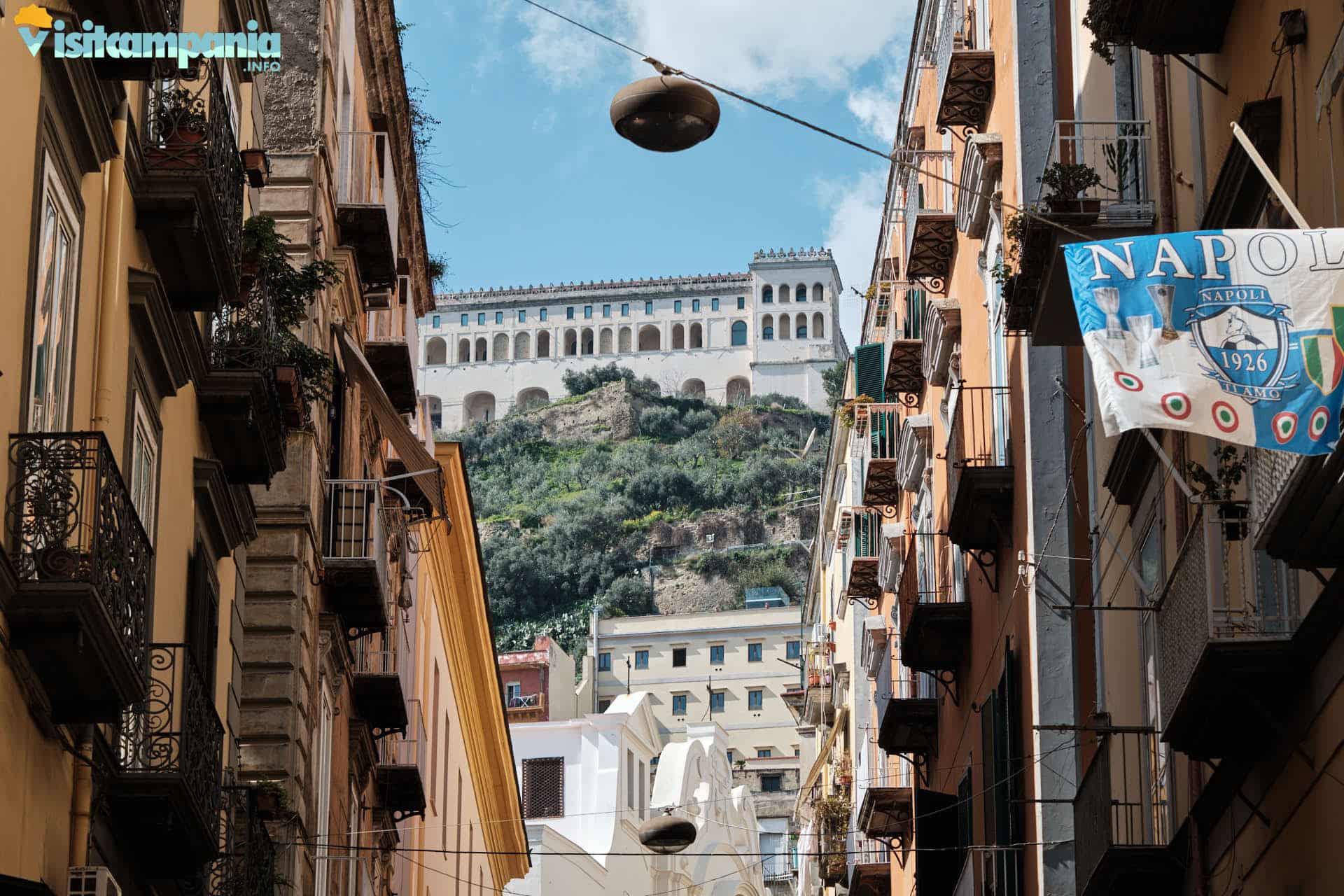
In front of us stretch the alleys of the Spanish quarters teeming with tourists. To our right, looking up, we can see the Certosa di San Martino with its vegetable gardens and gardens stretching on the Vomero hill from which we have just descended. Also on the right, a few meters away, you can see the baroque façade of the church of Santa Maria della Concezione in Montecalvario. We turn left and in a few steps here we are at the goal, in via Toledo, right in the center, near the homonymous metro station.
Our urban trekking excursion ends here but a short distance away there are endless things to see and discover, from Piazza del Plebiscito to the decumani, from the museum of the Gallerie d’Italia to the Royal Palace. In short, more than an end, an excellent starting point.
To learn more
Pedamentina (video)
“Come l’acqua che scorre” by Marguerite Yourcenar, Einaudi, 2014 (book)

